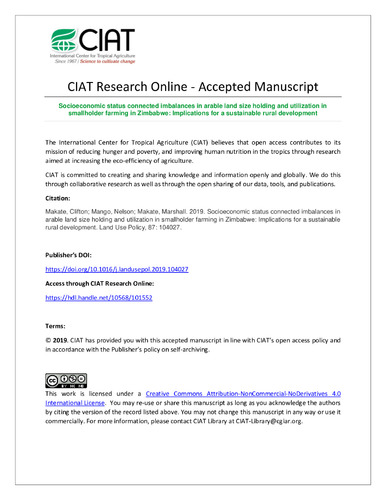Socioeconomic status connected imbalances in arable land size holding and utilization in smallholder farming in Zimbabwe: Implications for a sustainable rural development
Abstract
Access to land and other natural resources are key means of driving rural people out of abject poverty. Inequalities in access to land and supportive services that ensure full utilization of land are therefore hurting in rural societies. This article enumerates and explain wealth-related imbalances in land size holding and utilization in Zimbabwe’s smallholder farming sector. It relies on cross-sectional household level data collected from 601 smallholder farming households randomly sampled from four districts. Disparities in land size holding and utilization are measured using the Erreygers corrected concentration index. A decomposition exploration is performed to determine the contributing factors to enumerated inequalities in land size holding and utilization. Results reveal a pro-poor distribution of inequalities in low and very low arable land size holding and also in low land utilization. Conversely, a pro-rich distribution of inequalities is observed in high land size holding and high land utilization. Wealth-related inequalities are evident in both men and women farmer groups, youth and non-youth farmer groups and in different geographic regions. A decomposition analysis show that observed inequalities in both land size holding and utilization are hugely explained by asset wealth. Other factors including access to extension, age of farmer, fulltime-farming status and geographic location were also found to minimally explain measured inequalities. In conclusion, low land size holding and low land utilization are phenomenon highly concentrated within the poorest segments of society in Zimbabwe whilst high land size holding and utilization are found within the more affluent population. Asset holding chiefly explain the disparities. Results suggest the need for decision makers in land allocation, distribution, re-distribution, and agrarian transformation in general, to deliberately concentrate on the most vulnerable and poorer segments of society. Such will have far reaching implications for rural transformation and development.

